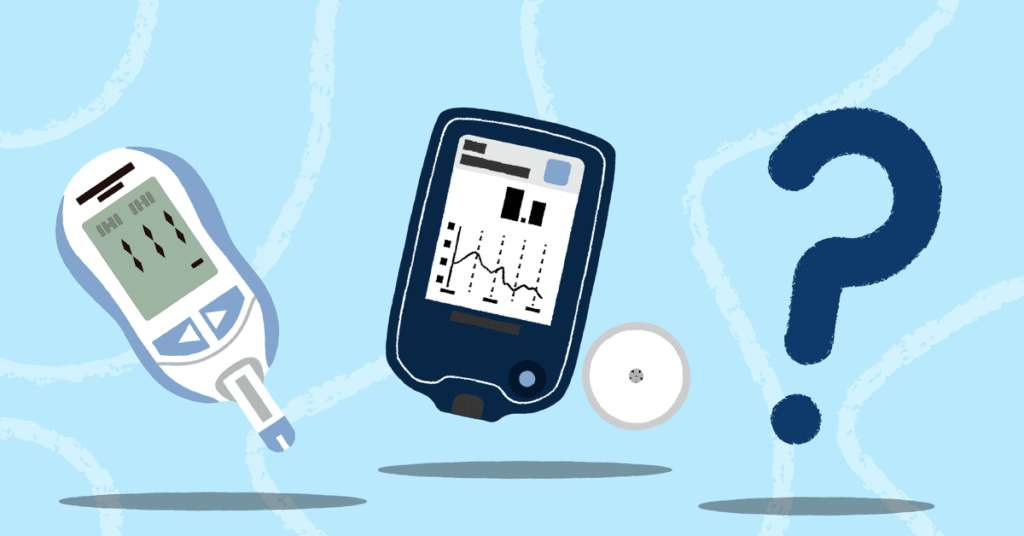Introduction:
The Crucial Role of Blood Sugar Monitoring in Diabetes Management
Monitoring blood glucose levels stands as a cornerstone in the effective management of diabetes, offering real-time insights that enable individuals to make informed adjustments to their medications, exercise routines, and dietary choices.
In an era of advancing technology, the options for blood glucose monitors have expanded significantly. This comprehensive guide aims to delve into the intricacies of these options, empowering individuals to make informed choices aligned with their unique needs.
Finger Prick Tests – Tradition Meets Effectiveness
The initial generation of blood glucose monitors, commonly known as finger prick tests, has been a reliable method for over 50 years. This method involves pricking the fingertip, placing a drop of blood on a strip, and inserting it into a handheld meter for quick results.
While these devices meet international accuracy standards and are suitable for individuals with type 2 diabetes requiring infrequent testing, they may become impractical for those who need more frequent monitoring due to the discomfort associated with frequent finger pricking.
Read Guide about Wegovy Dosage Guide: The Best Way For Weight Loss
Continuous Glucose Monitoring – Real-Time Insights with Nuances
Continuous glucose monitoring has undergone significant advancements over the past two decades, revolutionizing glucose testing, especially for individuals dependent on insulin.
Tip: Please fill out the form if you or a friend would like more information on blood sugar monitoring devices.
Utilizing sensors applied to the arm or abdomen, these systems measure subcutaneous glucose levels every few minutes. The readings are then transmitted to devices like smartphones, offering real-time information with alarms for low or high glucose levels.
Despite the time lag between subcutaneous and blood glucose levels, continuous monitoring has evolved to become increasingly accurate and user-friendly.
However, users need to consider factors such as sensor pressure, a warm-up period after application, and the associated costs.
Must Read CGMs in noncritical care hospitals optimizes glycemic control
Challenges and Considerations:
Cost and Beyond
Despite the undeniable benefits of continuous monitoring, challenges persist. Notably, the lack of subsidies for type 2 diabetes patients means they bear the financial burden, typically around A$50 per week.
Additionally, the sensors used in continuous monitoring systems have a limited lifespan of one to two weeks, necessitating regular replacement.
While promising, implantable devices with extended lifespans are still in development and are not yet available in Australia.
Balancing the cost against the benefits becomes crucial, emphasizing the need for individuals to consult healthcare professionals when deciding on the most suitable blood sugar monitoring option for their circumstances.
Beyond the Mainstream:
Watch-Based Devices and Future Innovations
Contrary to the widely advertised watch-based devices, scientific evidence supporting their accuracy as blood sugar monitoring is lacking. Additionally, while implantable devices with longer durations are in development, they have not yet become accessible in Australia.
This highlights the importance of critically evaluating alternative options and staying informed about potential future innovations.
Patients must navigate through this diverse landscape in collaboration with their medical practitioners, specialists, or diabetes nurse educators, ensuring they make choices that align with their individual needs and preferences.
Also, read about Impact of Walking Speed on Type 2 Diabetes Risk
Conclusion:
Collaborative Decision-Making for Effective Diabetes Management
Regardless of the chosen blood sugar monitoring device, collaboration with treating medical practitioners, specialists, or diabetes nurse educators is crucial.
This collaborative approach ensures that individuals receive personalized guidance, taking into account their unique health circumstances and preferences.
Making informed decisions empowers individuals to manage diabetes effectively through the optimal blood sugar monitoring that aligns seamlessly with their individual needs and lifestyle.


